Featured Panoramic Photo Above:
Classic Charles Conlon photo of Ty Cobb sliding into Jimmy Austin
Baseball History Comes Alive Now Ranked As a Top Five Website by Feedspot Among All Baseball History Websites and Blogs!
(Check out Feedspot's list of the Top 35 Baseball History websites and blogs)

Guest Submissions from Our Readers Always Welcome! Click for details
Scroll Down to Read Today’s Essay
Subscribe to Baseball History Comes Alive for automatic updates (sign-up block found in right side-bar)
As a Free Bonus for subscribing, you’ll get instant access to my two Special Reports: Memorable World Series Moments and Gary’s Handy Dandy World Series Reference Guide!
“Ewell Blackwell and Baseball in 1947” Photo Gallery
Click on any image below to see photos in full size and to start Photo Gallery:
In today’s essay, Bill Schaefer shares with us some interesting information about one of the most intimidating pitchers in major league history, Ewell “The Whip” Blackwell. Bill quotes sportswriter Joe Falls, who once said of Blackwell: “For one season – 1947 – he was the most intimidating pitcher of all time.” That’s quite a statement. I think you’ll enjoy Bill’s essay about one of baseball’s overlooked stars.
Another Edition of Baseball’s Forgotten Stars:
Ewell “The Whip” Blackwell
“His pitching delivery looks like a Picasso impression of an octopus in labor”- Sportswriter Joe Williams, speaking of Ewell Blackwell
“I don’t see how he ever loses a game”-Stan Musial, speaking of Ewell Blackwell
On a sunny Sunday, July 20, 1947, my dad and I were seated in the upper deck of the Polo Grounds, between home plate and first base, watching the first game of a twin bill between our beloved New York Giants and the Cincinnati Reds. Ewell “The Whip” Blackwell was pitching for the visiting team and was dominant. Well, it figured. He was 15-2 with a bad ball club, coming off an amazing May and June where his composite ERA for the two months was 1.59. He had won 13 straight games.
The Giants were trailing 4-0 as they began their final at-bat. Willard Marshall led off the ninth inning with a long home run into the lower deck in right-center field. That year the Giants led the league in runs scored and could explode at any time. It was now 4-1 and, brimming with youthful optimism, I turned to my father, “Do you think they might be getting to him?” He said, “Well, I don’t know…” Blackwell mowed down the next three batters to go 16-2.
1947: Baseball’s Historic Year
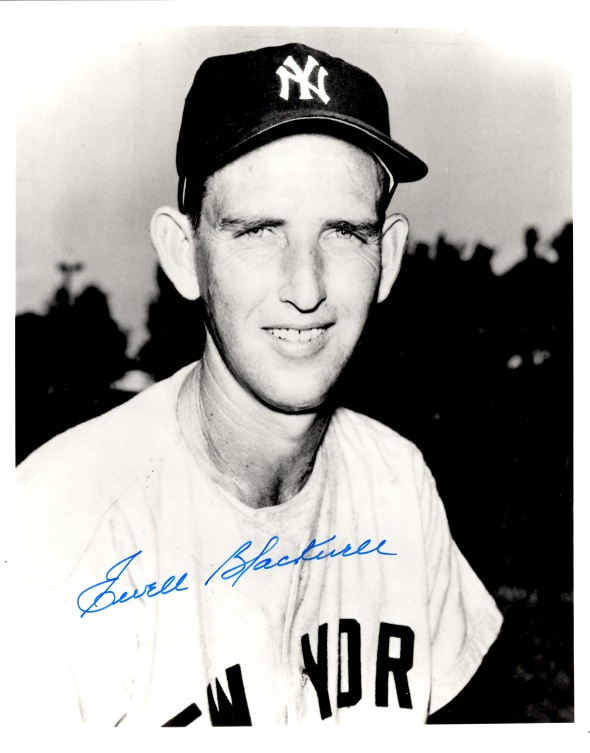
In 1947, the movie “Miracle on 34th Street” emerged as an instant holiday classic; the transistor was invented and Jackie Robinson became the first African American to play major league baseball.
“I don’t care if the guy is yellow or black, or if he has stripes like a bleeping zebra. I’m the manager of this team and I say he plays. What’s more, I say he can make us all rich. And if any of you cannot use the money, I will see that you are all traded,” bellowed Leo Durocher to his players in a preseason meeting. Interesting to note, in a neighborhood of red hot baseball fans in Westfield, New Jersey, I heard not a single derisive adjective directed toward Robinson. We just thought he was the most electrifying player we had ever seen.
Ewell Blackwell Has a Year Like No Other
Nicknamed “The Whip” because of his buggy whip sidearm delivery, where right-handed batters said it looked like he was throwing from behind third base, he was genuinely feared by opposing hitters. Described as looking like “a man falling out of a tree,” The Whip was right up there with Feller, Walter Johnson, and Randy Johnson on the intimidation scale. His right arm seemed to stretch forever and was like a disembodied force extending from his beanpole 6’6” frame. Ralph Kiner confessed his legs quivered when he stood in against him. Roy Campenella stated unequivocally he was the toughest pitcher the Dodgers faced.
Blackwell threw a two-seam fastball to righties and a four-seamer to left-handed batters. Both deliveries produced a heavy, sinking ball that hit a baseball bat like a ton of bricks. Hitters swore the wooden club they held in their hands winced when the ball made contact. He led the league in wins with 22, complete games with 23, and his 193 strikeouts also topped the loop. His 2.47 ERA was second only to Warren Spahn’s 2.33. A slow start in April and a late August twisted knee cost him the earned run title.
Ewell Blackwell was the gift of Flugen Ewell and Edna Blackwell, on October 23, 1922, in Fresno California. Ewell was a small, frightfully skinny boy, only 5’5” at the age of 13. But a metamorphosis was underway. A few years later, as if by wizardry, he found himself on the pitcher’s mound at Bonita high school, a towering 6’3’’ and throwing the ball harder than anyone on the team.
The scouts began arriving in droves and Cincinnati scout Pat Paterson made the best offer. When the gangly 19-year-old arrived at the Reds’ spring camp in Tampa, Florida, in 1942, manager Bill McKechnie watched him closely for a couple of weeks and told GM Warren Giles, “You may have one of the all-time greats.” So, instead of class C in Ogden, Utah, the Reds kept this unique kid on their major league roster.
Blackwell pitched twice for Cincy and was shipped to their triple-A affiliate, Syracuse, where he had a sensational season. The Big club had won pennants in ’39 and ’40 when pitchers Bucky Walters and Elmer Riddle were in their prime but then fell to .500 in 1942. Ewell Blackwell was the boy to help revitalize the team. Then the Army beckoned in 1943.
Blackie rejoined the team in 1946 and enjoyed a wonderful rookie campaign. He produced a sparkling 2.45 ERA, hurled a league-leading five shutouts, and yielded but a single home run in 194.1 innings! He also pitched in the first of six consecutive All-Star games, the first National Leaguer to do so.
Now, let’s zoom in to the highlight of Blackwell’s career. On June 18, 1947, at Crosley Field, Blackwell put a masterpiece in the books, as he no-hit the Boston Braves. Four days later he shackled the Brooklyn Dodgers, not allowing a hit for 8 1/3 innings. His teammate Johnny Vander Meer, the only man to pitch consecutive no-hitters, in 1938, was on the top step of the dugout poised to congratulate him. But Eddie Stanky promptly smashed a hard grounder right between Blackwell’s legs into center field to break up the no-no. A batter later, Jackie Robinson belted a liner to left and The Whip settled for a two-hit shutout.
Then, at 25, fate moved its huge hand. Blackwell suddenly felt a searing pain in his right shoulder while pitching in an exhibition game, on a raw afternoon in early April. In 1948, you pitched through most injuries and Ewell did just that—until he couldn’t lift his right arm. Three weeks of forced rest restored him to the starting rotation but the season was a washout.
In January 1949, surgeons removed Blackwell’s infected right Kidney. The surgery cut through heavy muscles of his right side and back, prompting predictions that his career was over. Not quite. The tall righty battled back through five tough months and finished a scintillating September with a hint of the old Whip. He was ready for 1950.
Unlike the previous two years when Blackwell had a combined record of 12-14 with an earned run average of 4.43, the start of the new decade was exhilarating. He won 17 games and posted a 2.97 ERA. Again, he owned September with a microscopic 1.01 in the earned runs department. Was he back? 1951 saw Blackie cop 16 wins, with a 3.44 ERA. However, for the second consecutive season, he led the league in hit batsmen, plunking 22 batters over the two years! “I had become a mean pitcher,” Ewell said with a wry smile.
But, alas, in 1952 arm woes caught up with the beleaguered pitcher and rendered him basically ineffective. “The pain was pounding, from my elbow to my shoulder,” admitted Blackwell. The Reds traded him to the Yankees in August and Casey Stengel made him a surprise starter in Game Five of the World Series with Brooklyn. Blackwell struggled through five innings with no decision, allowing four runs. His career mercifully ended with an ultra-brief stint as a member of the newly transplanted Kansas City Athletics in 1955.
Ewell Blackwell left us at age 74, in 1996. After a 10-year major league career, his record was 82-78, primarily with a perennially losing team. It could have been so much better. Perhaps his legacy can be best described by sportswriter Joe Falls:
“For one season – 1947 – the most intimidating pitcher of all time.”
Bill Schaefer
Sources: Sport Magazine, July, 1948, International News Photos for Sport; Ewell Blackwell-Wikipedia; Ewell Blackwell baseball reference.com; Cincinnati Reds 1947 schedule almanac; Society for American Baseball Research (SABR), Ewell Blackwell by Warren Corbett.
Subscribe to our website, “Baseball History Comes Alive!” with over 1200 fully categorized baseball essays and photo galleries, now surpassing the 700K hits mark at 735K hits: www.baseballhistorycomesalive.com
Take a guess at this week’s Mystery Player

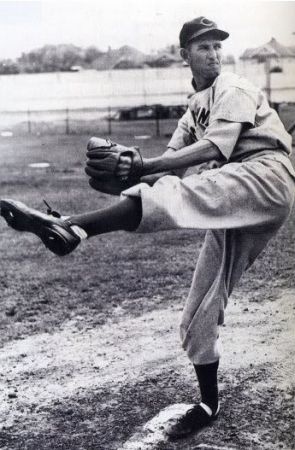
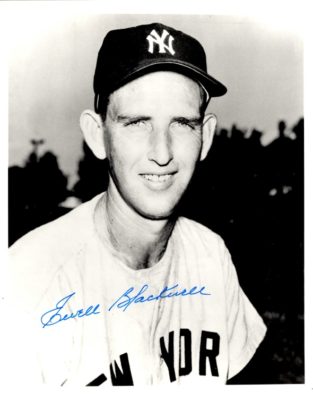
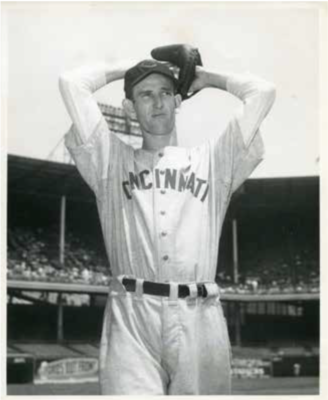
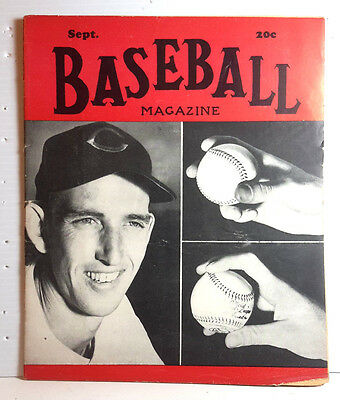
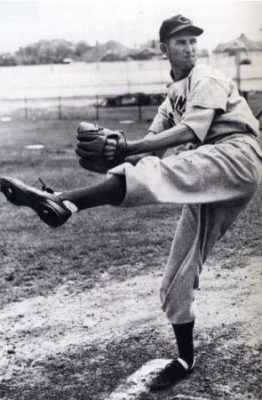
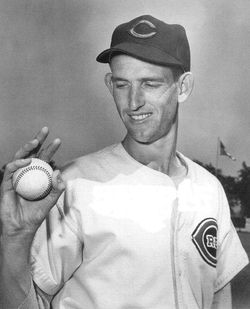
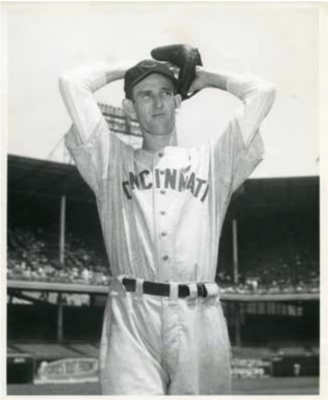
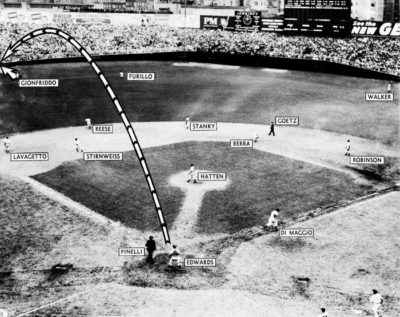
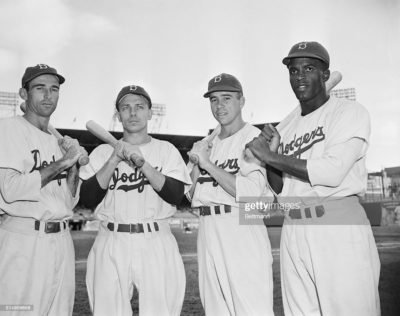
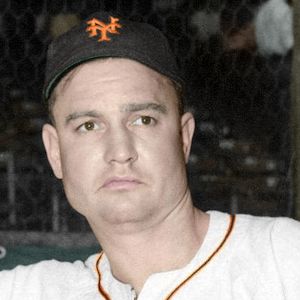
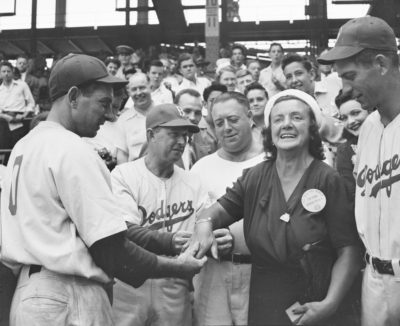
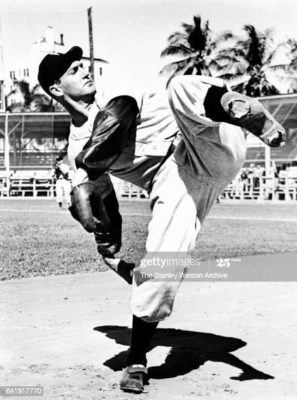
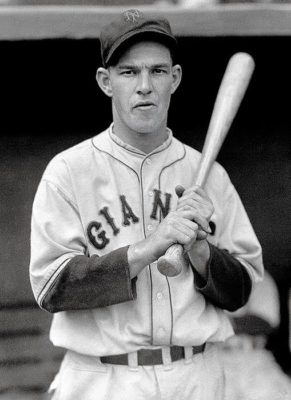
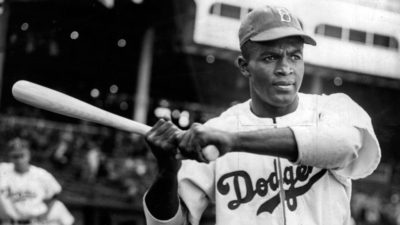
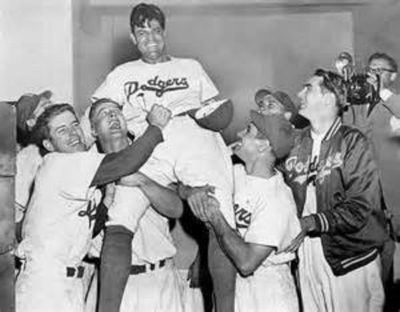
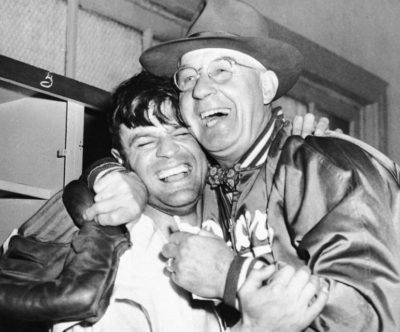
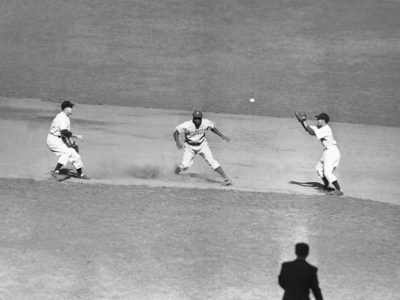
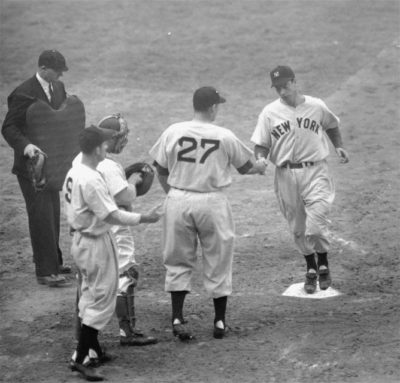
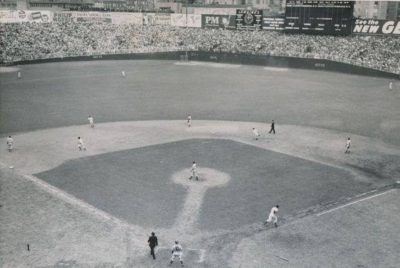
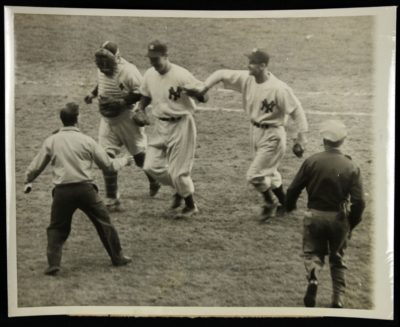
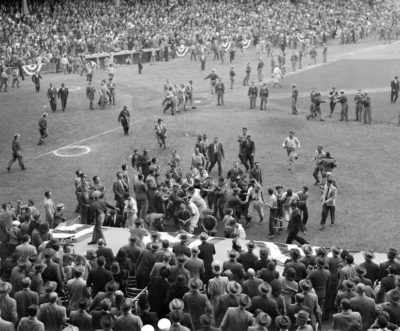
Great read as always Bill. Wished I could have seen him pitch. Interesting to me that he had two seasons 1947 and 1950 in which he had 9.4 bWAR and 7.5bWAR respectively. Those are really high numbers for any season for any pitcher! Pitched 10 years in MLB. Total career salary of $103,500!
Super comment, Mark! Yes, those WAR’s are high for a pitcher and that’s a ridiculous amount of money for 10 years in the Bigs.
In fact, Blackwell was so intimidating that one player, with two strikes already, turned to the home plate umpire and said, “You can can call me out on any pitch now, I’ve had enough of this guy!”
Great post Bill! As always I love the personal reflections between you and your dad! He gave you some great memories…that’s the beauty of the game of baseball. There’s nothing like it for bonding fathers and sons!
Hi Gary:
I remember Ewell Blackwell very well. When he went into his wind-up, he looked like a pretzel.
With regard to the previous comment, baseball was pretty good for fathers and daughters and it turned out to be mothers,too. I don’t know if you remember I became a fan in 1947. My dad was thrilled to have someone in his family to talk baseball with. After a while my mom saw what a good time we were having, she got on board and became one of the biggest fans you could find.
God bless her. She’s gone 31 years now. I had a photo of her sitting in the grandstand at Shea Stadium. She was 75. She had a Mets cap on and had a scorecard in her lap. I had it enlarged to poster-size and sent it to her for Mothers Day. She was 78. I told her to be on the lookout for it in the mail. I didn’t tell her what it was, only that she was probably the only “kid” on the block to have one. She LOVED it.
As always gentlemen, thanks for the memories.
Joan
Thanks Joan…always great to hear from you!
Nice memory, Joan!
My first full year of Giants fanaticism was 1947. Blackwell had nasty stuff that’s for sure.
Also, the Dodgers had a pitcher named Harry Taylor who always seemed to give up three runs that year, and no more. So, I looked it up and his ERA was 3.11-how about that?